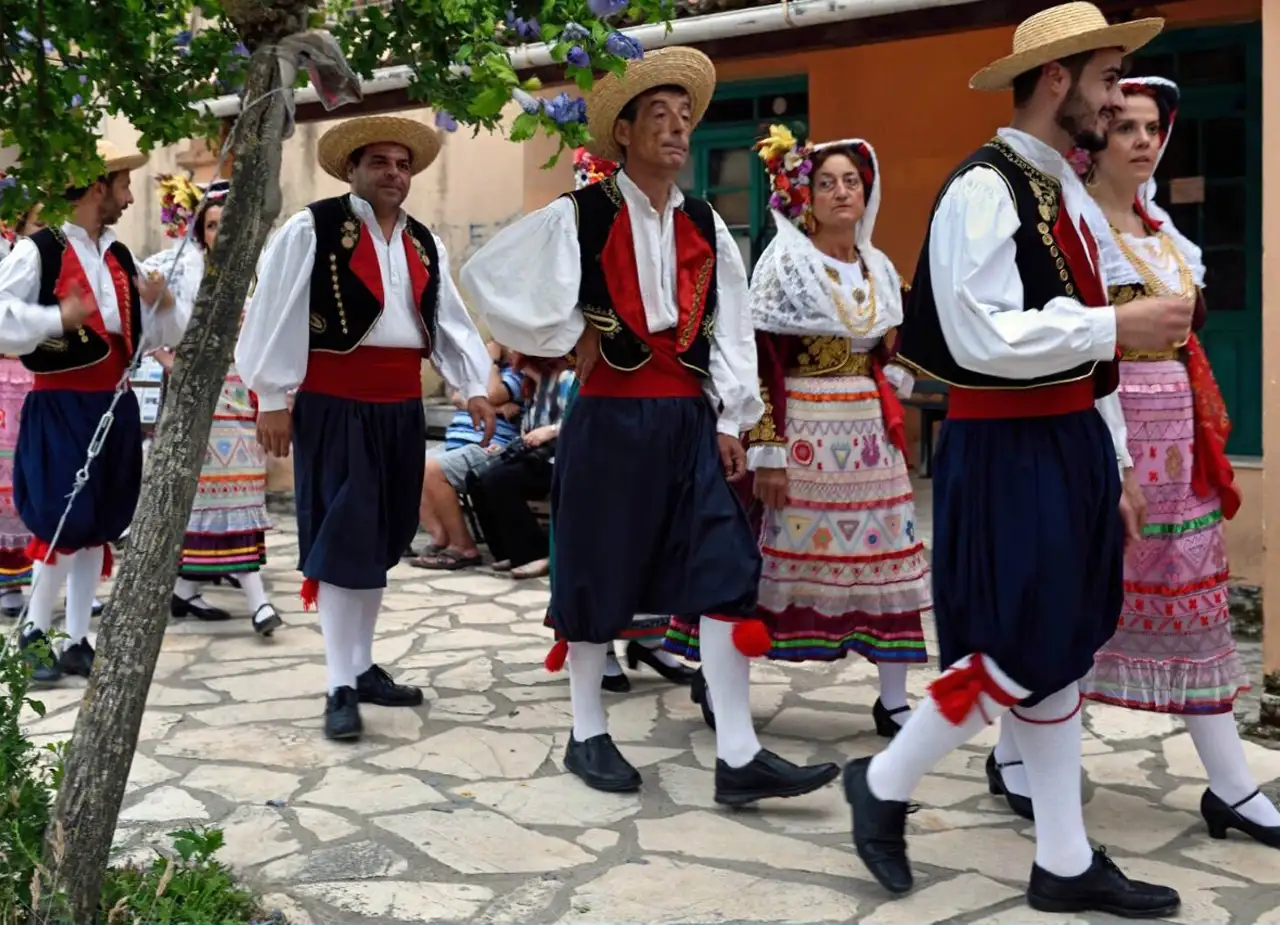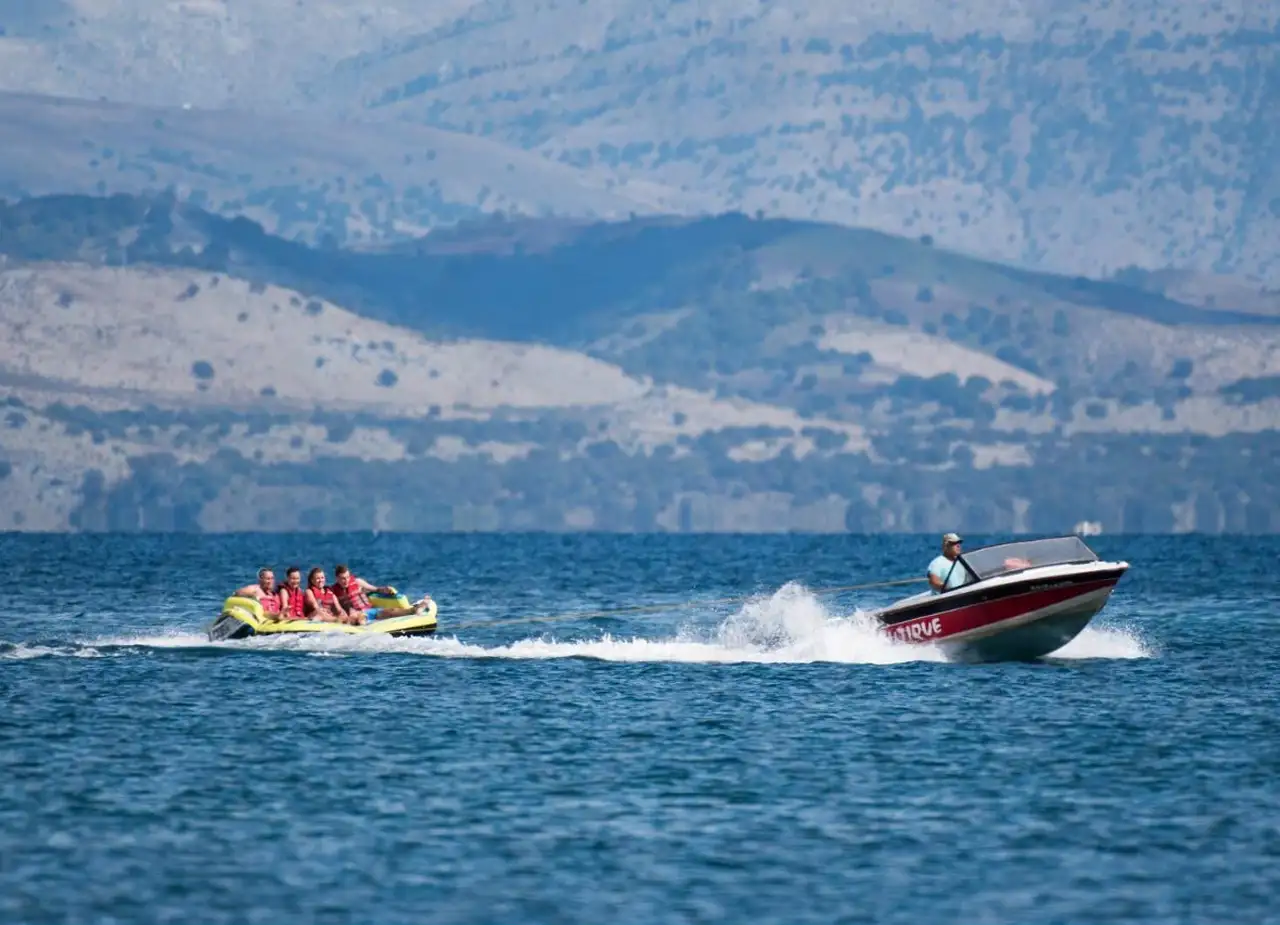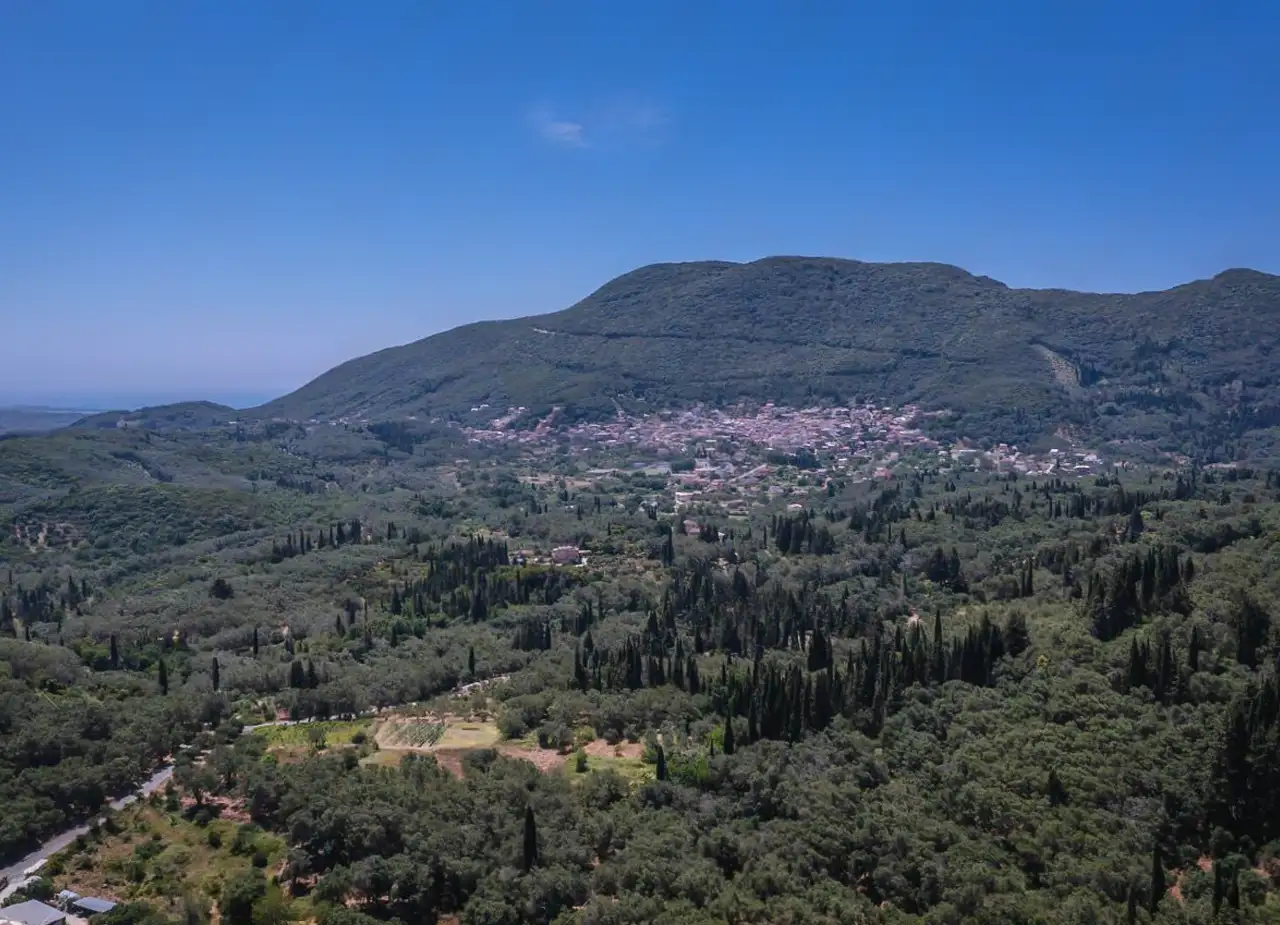Tradition in Corfu

Corfu, with its rich cultural tradition shaped by Greek, Venetian, and broader European influence, stands out for its unique traditional songs and dances, as well as the distinctive costumes that accompany these expressions. The strong presence of music and dance in festivals, celebrations, and human moments makes this traditional heritage vibrant and timeless.
The folk songs of Corfu, written in pan-Hellenic fifteen-syllable verse, belong to the categories of ballads, love songs, and satirical songs, but they deliberately avoid warlike and klephtic themes, which highlights the cheerfulness and lifestyle of the primarily urban population. The ballads, rich in melodic variations and narration, were beloved in the villages, where they were sung during the Carnival period through intensely lyrical songs, often led in rhythm by women. The songs of the carnival season, the kantades with guitars and violins, testify to the Venetian influence, combining Mediterranean culture with lyrical sensitivity. In the villages, the festivals of “tsí Kérkyras” are also prominent, where residents sing working songs about the harvesting of olives, raisins, and grapes, accompanied by violin, guitar, and later, accordion.
The most beloved traditional dance is the “Kerkyràikos Syrtós” (also known as “Roúga” or “Pérdika”), which is characterized by 12 steps, lightness, and lyricism. It is danced at festivals and weddings before 1900, with couples dancing in a circle or in pairs, with an impressive elegance of movement. The Dance of Saint George is a unique women’s dance with cloths, rooted in akritic songs, which appeared around 1900 in the region of Lefkimmi and continues to be danced today, initially by women and later also by men. The “Korakianítikos” is a well-known dance with a slow and fast part, maintaining variety in movements, while the “Fourlana,” an urban dance with strong Italian influence, displays a vivid and lively character.
The Corfiot costumes, especially visible in elder celebrations and traditional clubs, are distinguished by their noble detail and luxury. The women’s costumes include a long dress, embroidered overcoat, colorful Venetian aprons with ornaments, and the peséli, a velvet, embroidered vest that was usually offered by the groom to the bride. The head is covered with a scarf or ornate head covering, along with veils or flowers, creating a luxurious decoration.
Traditional Costumes
The men’s costumes are simpler: a white shirt with wide sleeves, a vest, a belt, and a straw hat or fez, consistent with the costumes of the other Ionian Islands. Attention to detail and jewelry, especially in bridal models, indicates the cultural connection with European and urban standards.
Today, traditional costumes and dances are presented at festivals such as the International Dance Festival of Corfu, where groups from across the island participate. Clubs like the “Faiakes” research, preserve, and record old dances, songs, and costumes, even collaborating with the Academy of Athens.
Village events, festivals, weddings, carnival ceremonies, serve as platforms for the active preservation of traditions. With musical instruments like mandolin, violin, guitar, and accordion, as well as vocal groups (kantades, ballads, aréki), the songs and rhythms remain unchanged, whether in the villages or urban Corfu. This tradition is rekindled in annual events: in the Dance of Saint George, in the festivals after Easter and in August, and in the Saint Nicholas Kantades with local mandolin players. Corfu’s Carnival, with its quadrilles and fourlanes, combines elements of Venetian revelry with local folk tradition.
In this rich cultural universe, Corfu preserves its identity through songs, dances, and costumes. It is a living novel that continues to be written at festivals, celebrations, in every group of friends singing “under the trees” or “in the dance.” A tradition that does not merely copy what once was, but reshapes it with respect, artistry, and freshness, ensuring that its roots will not be cut, but will give new shoots for future generations.

